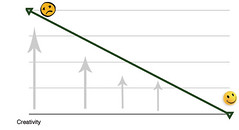Leadership is Influence, nothing more, nothing less – Dr John C. Maxwell
In the 20 plus years that I have been training, coaching and mentoring leaders across the globe, this is still true. But there are different ways to influence others, which is right for you? Michael Port reviews Bob Burg’s latest book:
I know a guy who gets (almost) everything he wants. Let’s call him Fred. He wins every negotiation. He successfully argues down every bill/invoice. He gets people to finish things when he wants them to. However, and this is big however, nobody wants to play or work with him ever again. He berates, bullies and threatens others into submission. It’s just easier to give him his way then deal with him.
To me, he seems miserable and he makes everyone else miserable as a result. But, he gets what he wants.
Is that influence? I suppose so. Is that the kind of influencer you want to be? I imagine not.
But what do you do if you’re not so tough? What do you do if your natural way of being is empathetic, kind and easy going? What if you don’t like to make waves?
Click here to view original article at What is Influence? | Book Yourself Solid
According to Bob, in Adversaries Into Allies, there’s a much better way. It’s more fun, and a lot more effective. For both immediate and long-term, sustainable results, helping people make decisions that are not only in your best interest, but in alignment with their best interests as well, is the way to go.
Doing this effectively, consistently, and predictably, however, takes influence. In the book, Bob shows you how to:
- Control your own emotions: Responding calmly rather than allowing your emotions to get the better of you will ensure not putting others on the defensive but rather help them remain open to your ideas.
- Understand the clash of belief systems: Every individual operates based on an unconscious set of beliefs, experiences, and ideas, which are most likely very different from yours. Understand this and you can avoid confusion and numerous misunderstandings that stand in the way of most people’s ability to influence.
- Acknowledge their ego: People want to feel good about themselves; if you make someone genuinely feel good, you’re one step closer to making an ally.
- Set the proper frame: People react and respond to other people. Approach potential conflicts from a position of benevolence, resolution, and helpfulness and they will follow suit. Vital: being able to reset another’s already existing negative frame.
- Communicate with tact and empathy: While the first four principles are vital, this is what brings it all home. Saying the right thing at the right time makes all the difference in terms of moving people to your side of the issue and taking the appropriate action that benefits all concerned.
Click here to view original article at What is Influence? | Book Yourself Solid
Related articles



























